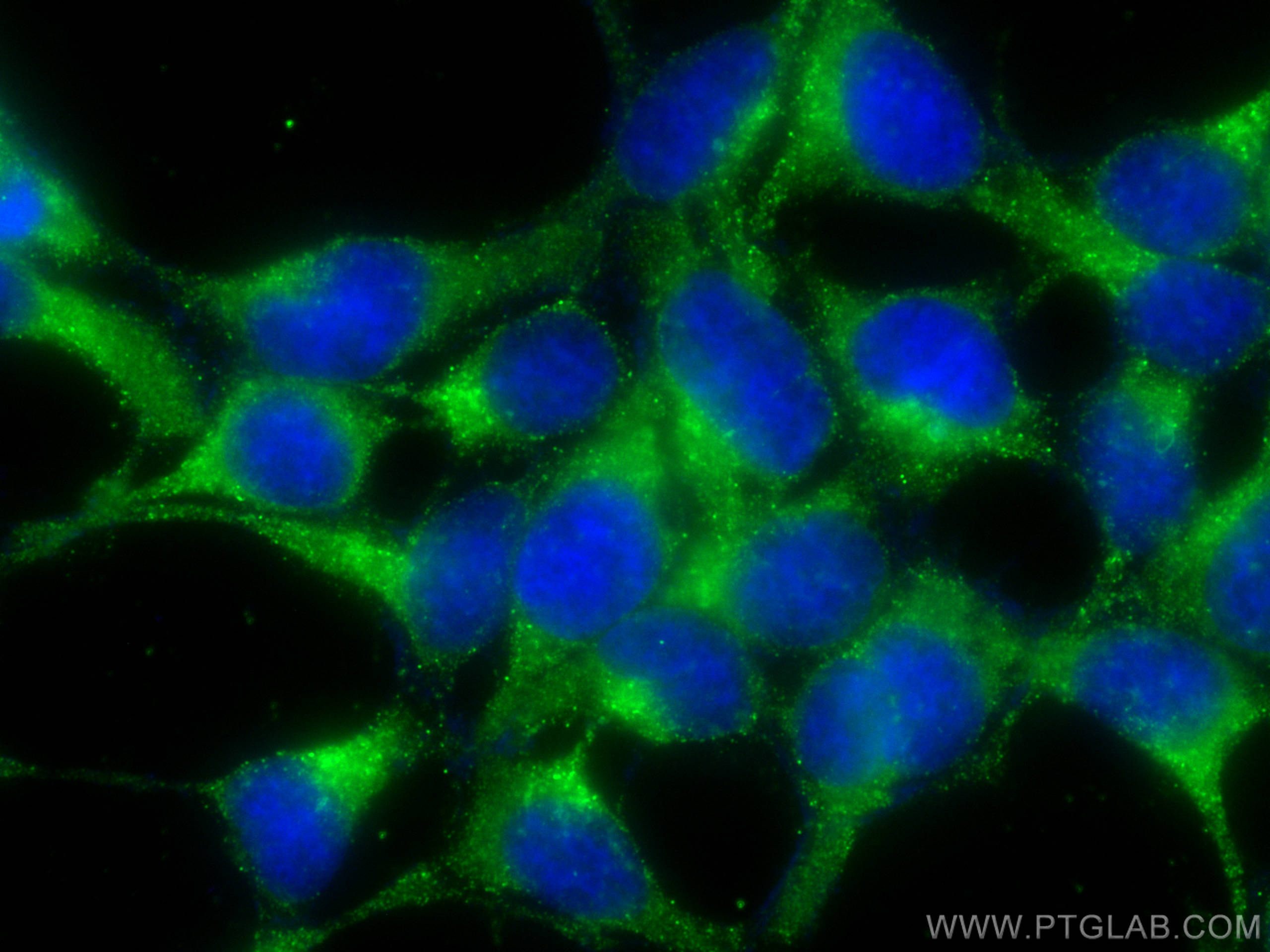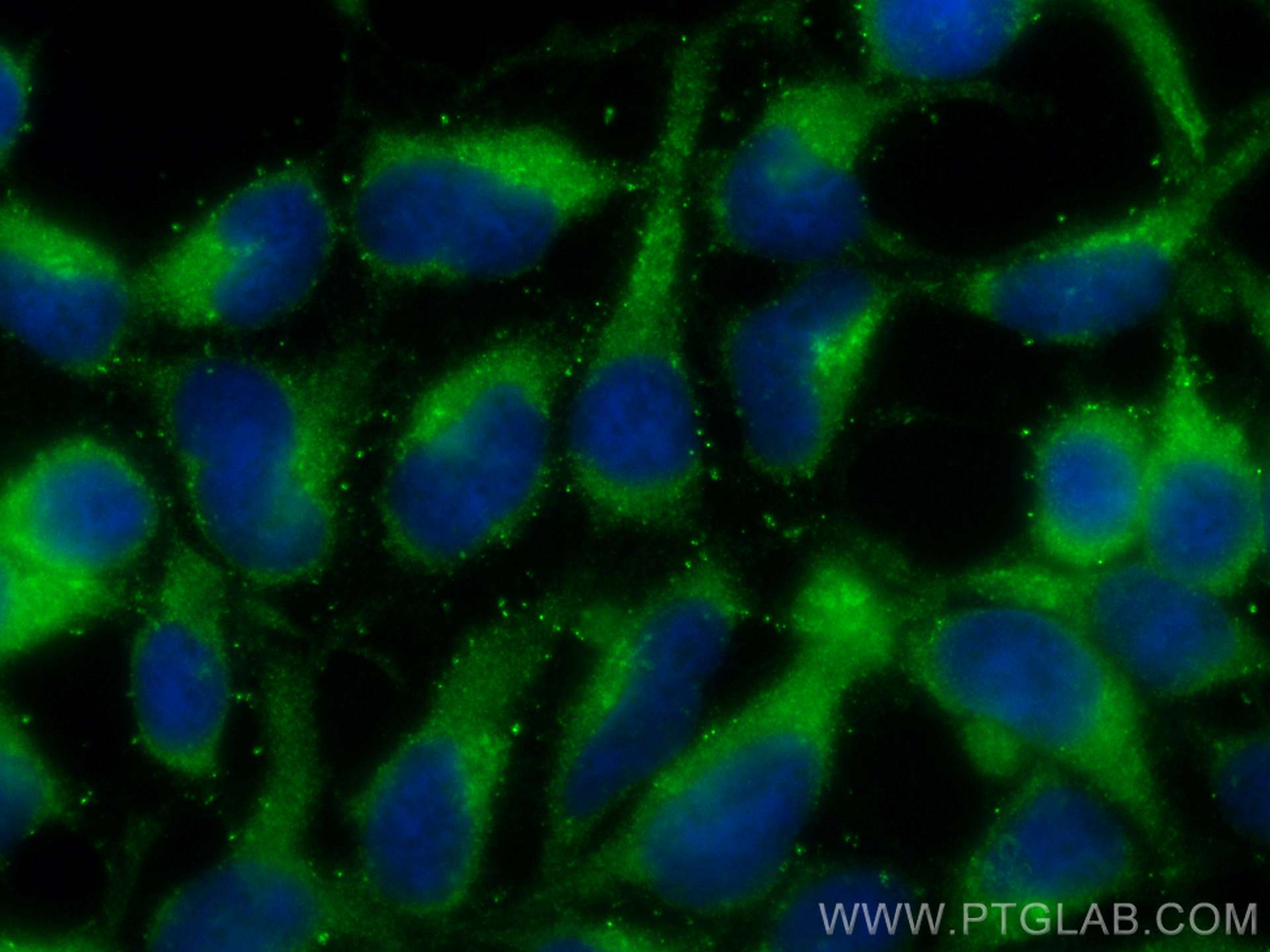Validation Data Gallery
Tested Applications
| Positive IF/ICC detected in | HEK-293 cells |
Recommended dilution
| Application | Dilution |
|---|---|
| Immunofluorescence (IF)/ICC | IF/ICC : 1:50-1:500 |
| It is recommended that this reagent should be titrated in each testing system to obtain optimal results. | |
| Sample-dependent, Check data in validation data gallery. | |
Product Information
CL488-68219 targets ATP6V1B1 in IF/ICC applications and shows reactivity with human, mouse, rat, pig, rabbit samples.
| Tested Reactivity | human, mouse, rat, pig, rabbit |
| Host / Isotype | Mouse / IgG1 |
| Class | Monoclonal |
| Type | Antibody |
| Immunogen |
CatNo: Ag7405 Product name: Recombinant human ATP6V1B1 protein Source: e coli.-derived, PET28a Tag: 6*His Domain: 1-327 aa of BC063411 Sequence: MAMEIDSRPGGLPGSSCNLGAAREHMQAVTRNYITHPRVTYRTVCSVNGPLVVLDRVKFAQYAEIVHFTLPDGTQRSGQVLEVAGTKAIVQVFEGTSGIDARKTTCEFTGDILRTPVSEDMLGRVFNGSGKPIDKGPVVMAEDFLDINGQPINPHSRIYPEEMIQTGISPIDVMNSIARGQKIPIFSAAGLPHNEIAAQICRQAGLVKKSKAVLDYHDDNFAIVFAAMGVNMETARFFKSDFEQNGTMGNVCLFLNLANDPTIERIITPRLALTTAEFLAYQCEKHVLVILTDMSSYAEALREVSAAREEVPGRRGFPGYMYTDLAT 相同性解析による交差性が予測される生物種 |
| Full Name | ATPase, H+ transporting, lysosomal 56/58kDa, V1 subunit B1 |
| Calculated molecular weight | 57 kDa |
| Observed molecular weight | 56 kDa |
| GenBank accession number | BC063411 |
| Gene Symbol | ATP6V1B1 |
| Gene ID (NCBI) | 525 |
| RRID | AB_3084445 |
| Conjugate | CoraLite® Plus 488 Fluorescent Dye |
| Excitation/Emission maxima wavelengths | 493 nm / 522 nm |
| Form | |
| Form | Liquid |
| Purification Method | Protein G purification |
| UNIPROT ID | P15313 |
| Storage Buffer | PBS with 50% glycerol, 0.05% Proclin300, 0.5% BSA{{ptg:BufferTemp}}7.3 |
| Storage Conditions | Store at -20°C. Avoid exposure to light. Stable for one year after shipment. Aliquoting is unnecessary for -20oC storage. |
Background Information
ATP6V1B1, also named ATP6B1, VATB and VPP3, belongs to the ATPase alpha/beta chains family. ATP6V1B1 is mainly expressed in kidney. ATP6V1B1 is essential for the proper assembly and activity of V-ATPase. In renal intercalated cells, ATP6V1B1 mediates secretion of protons (H+) into the urine thereby ensuring correct urinary acidification. The calculated molecular weight of ATP6V1B1 is 57 kDa.
Protocols
| Product Specific Protocols | |
|---|---|
| IF protocol for CL Plus 488 ATP6V1B1 antibody CL488-68219 | Download protocol |
| Standard Protocols | |
|---|---|
| Click here to view our Standard Protocols |


